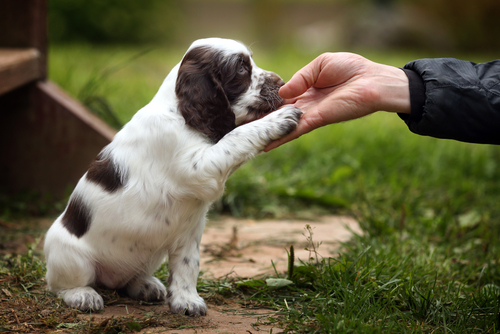Pulse of Information
Your source for the latest insights and updates.
Pawsitive Reinforcement: Training Tips That Actually Work
Unlock the secret to a well-behaved pet! Discover effective training tips that make learning fun and rewarding for your furry friend.
The Science Behind Pawsitive Reinforcement: How It Transforms Behavior
Pawsitive reinforcement is a behavioral training technique that leverages the power of positive outcomes to encourage desired behaviors in pets. At its core, the science behind this approach is rooted in psychology, specifically the principles of operant conditioning established by B.F. Skinner. Pawsitive reinforcement involves rewarding an animal with treats, praise, or affection immediately after they perform the desired behavior, which strengthens the likelihood of that behavior being repeated. For example, when a dog sits on command and receives a treat, the connection between the command and the action is reinforced, encouraging the dog to follow the command in the future.
This method not only enhances training effectiveness but also fosters a stronger bond between pets and their owners. The pawsitive reinforcement technique minimizes stress and fear associated with training, leading to a more joyful learning experience for both the pet and the owner. Research shows that pets trained with positive reinforcement are more likely to exhibit improved behavior over time, as they learn to associate good behavior with positive outcomes. Ultimately, embracing the science of pawsitive reinforcement can transform relationships between humans and their furry companions, paving the way for a harmonious household.

10 Common Training Mistakes to Avoid for Your Pup's Success
Training your pup can be a rewarding experience, but it's easy to fall into common traps that can hinder their success. Here are 10 common training mistakes to avoid to ensure your furry friend learns effectively:
- Inconsistent Commands: Using different words for the same command confuses your pup. Stick to one phrase for each action.
- Lack of Patience: Dogs thrive on positive reinforcement, so take your time and celebrate small victories.
- Ignoring Socialization: A well-behaved pup requires social exposure. Failing to introduce them to various environments and other dogs can lead to behavioral issues.
- Punishment Over Reward: Focus on rewarding good behavior rather than punishing mistakes. This creates a positive learning experience.
- Skipping Basic Training: Even if you have a specific goal in mind, ensure you cover the basics like sit, stay, and come. Skipping these can lead to problems down the road.
What is Pawsitive Reinforcement and How Can It Improve Your Dog's Training?
Pawsitive reinforcement is a motivational training technique that focuses on rewarding desired behaviors to encourage their repetition. Instead of using negative reinforcement or punishment, this approach fosters a trusting and harmonious relationship between the dog and its owner. The process typically involves giving treats, praise, or playtime immediately following a behavior you want to encourage. For instance, when your dog sits on command, a simple treat or enthusiastic praise reinforces that behavior, making it more likely to happen again in the future.
Implementing pawsitive reinforcement can lead to more productive training sessions and a happier dog. Research indicates that dogs respond better to positive motivation, leading to faster learning and improved retention of commands. Additionally, this method reduces anxiety and fear in dogs, promoting overall well-being. Here are a few key benefits of using pawsitive reinforcement in your dog's training:
- Strengthens the bond between the dog and owner
- Encourages a positive learning environment
- Reduces behavioral problems